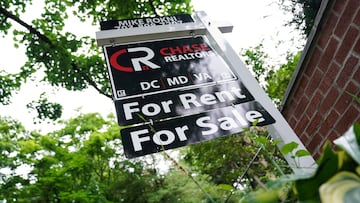What are the most undervalued housing markets in the US in 2023?
Housing prices that soared over the past two years are cooling, but the increase in values wasn’t uniform across the nation. Some markets are undervalued.

Through the pandemic housing prices skyrocketed, pushed up by the Great Migration of people reassessing where and how they lived which was aided by ultra-low mortgage rates. As people moved to smaller urban areas where the cost of living was lower many markets became overvalued.
However, to combat high inflation the Federal Reserve last year set out on a path of aggressive interest rate hikes. One of the areas of the economy affected most was mortgage rates. When combined with the soaring home prices many would-be homebuyers were forced out of the market.
That in turn has cooled the housing market nationwide. While experts are forecasting a moderate correction, some markets in particular are expected to see significant downturns. But new analysis has found a number of metropolitan statistical areas that are undervalued based on the cost of shelter compared to local median incomes.
The average daily mortgage rate hit 5.99% this week, the first sub-6% average since September.
— Redfin (@Redfin) February 4, 2023
This allows a buyer with a $2,500 monthly budget to spend about $35,000 more on a home than when rates were over 7%. #mortgagerates
The most undervalued housing markets in the US in 2023
Looking at data from November 2022, the most recent month for which comprehensive data is available, US News and World Report found the markets that were the most affordable. The Department of Housing and Urban Development (HUD) sets the level of affordability of households spending on shelter at no more than 30 percent of their gross income. This allows renters and homeowners to have more money left over for necessities and emergencies.
The average payment-to-income ratio in November 2022 was 36.6 percent nationwide. However, there were 14 metropolitan statistical areas that were under HUD’s threshold in the top twenty undervalued markets, primarily located in the Midwest, but also on the East Coast and in Texas. Topping the list was Detroit where the ratio was less than half the national average at 17.4 percent. The Motor City was followed by Cleveland, St Louis, Philadelphia and Cincinnati.
Top 20 undervalued US housing markets 2023
| Cleveland, OH | 18.9% |
| St. Louis, MO | 21.7% |
| Philadelphia, PA | 22.3% |
| Cincinnati, OH | 23.6% |
| Chicago, IL | 24.4% |
| Indianapolis, IN | 24.6% |
| Oklahoma City, OK | 25.4% |
| Kansas City, MO | 28.2% |
| Baltimore, MD | 28.8% |
| Houston, TX | 29.6% |
| Twin Cities, MN | 29.7% |
| Columbus, OH | 29.7% |
| Richmond, VA | 31.9% |
| Norfolk, VA | 32.7% |
| Atlanta, GA | 34.0% |
| Fort Myers, FL | 35.0% |
| Jacksonville, FL | 35.5% |
| Dallas, TX | 35.9% |
The most undervalued rental markets in the US in 2023
While in the run-up to the latest housing boom, the affordability levels in early 2020 made buying a house more attractive than renting. The national averages at the time were 33 percent for the typical tenant while homeowners were paying just 22 percent of their monthly income on mortgage payments.
Related stories
The financial sense of owning helped spur many to make the switch to purchasing a home of their own. The tables have turned though for some markets, with mortgage rates currently roughly double what they were when they bottomed out at historical lows of around 3 percent. The national average for renters is now 35.8 percent compared to almost 37 percent for homeowners of monthly income dedicated to paying for shelter.
However, the US is a big country and not all markets are the same. All of the top 20 undervalued metro rental markets are below the 30 percent threshold. The list is led by Omaha, Nebraska where the ratio is 22.3 percent, followed by St Louis, Cleveland, Kansas City and Indianapolis.
Top 20 undervalued US rental markets 2023
| Omaha, NE | 22.3% |
| St. Louis, MO | 22.7% |
| Cleveland, OH | 25.2% |
| Kansas City, MO | 25.4% |
| Indianapolis, IN | 25.4% |
| Oklahoma, OK | 25.9% |
| Twin Cities, MN | 26.1% |
| San Jose, CA | 26.6% |
| Richmond, VA | 27.4% |
| Cincinnati, OH | 27.4% |
| Detroit, MI | 27.8% |
| Seattle, WA | 28.0% |
| Houston, TX | 28.4% |
| Columbus, OH | 28.4% |
| Denver, CO | 28.4% |
| San Francisco Bay Area, CA | 28.6% |
| Philadelphia, PA | 28.7% |
| Chicago, IL | 29.4% |
| Baltimore, MD | 29.5% |
| Austin, TX | 29.5% |


